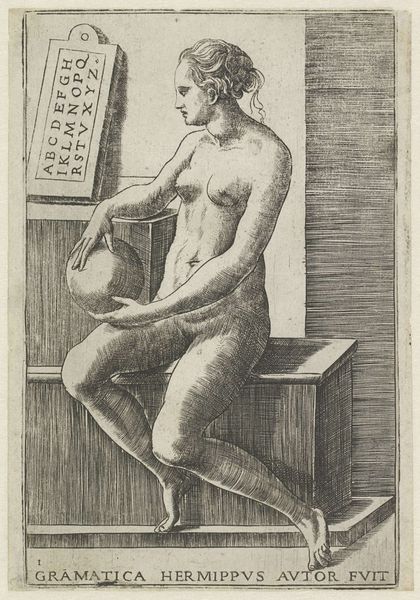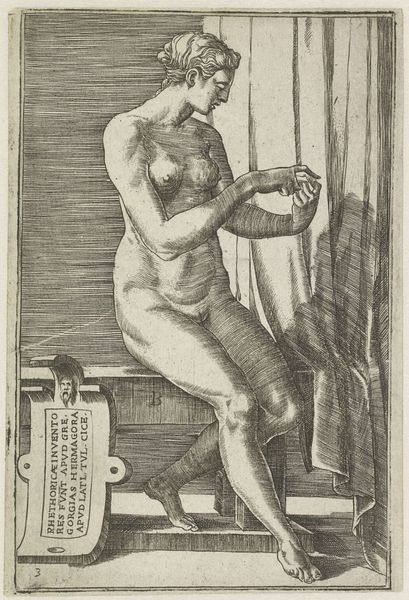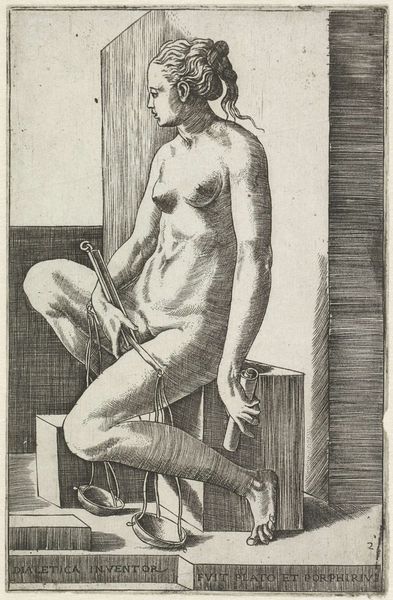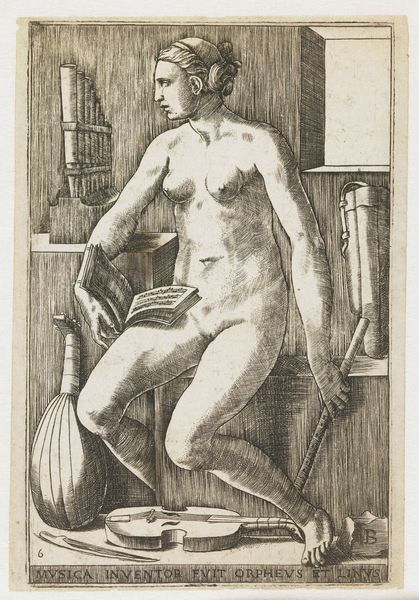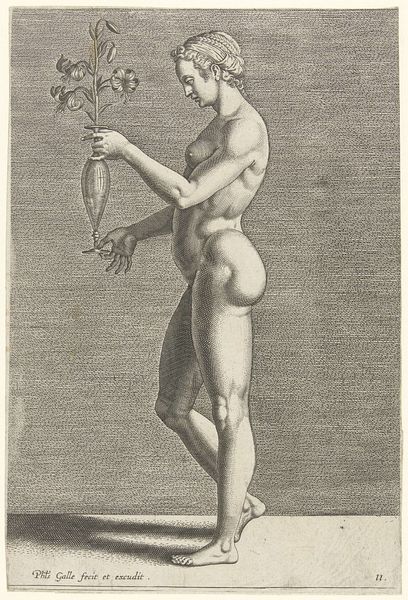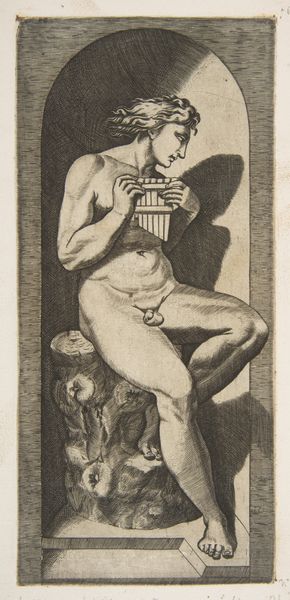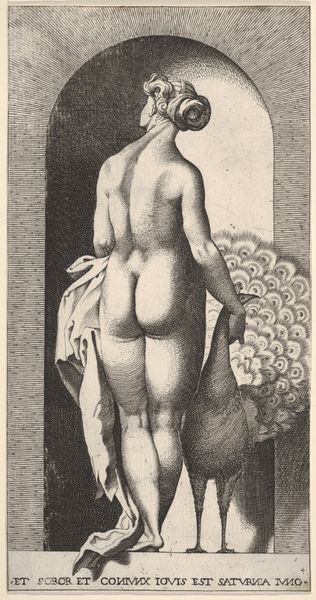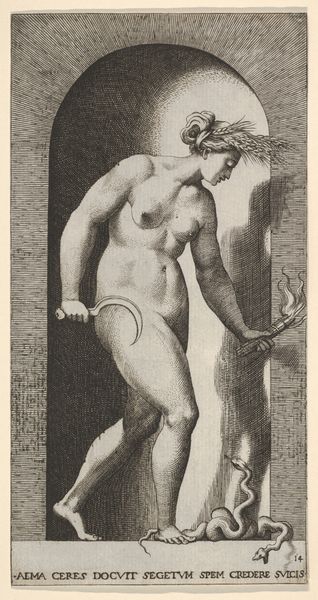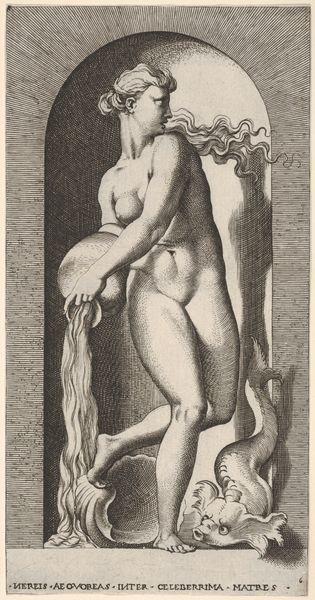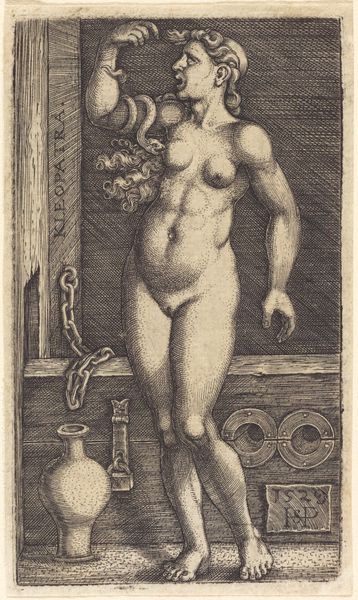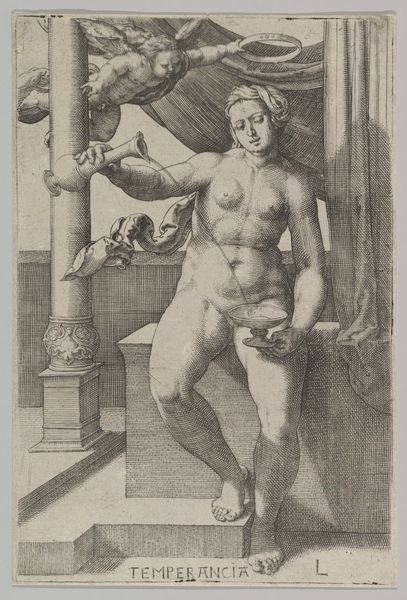
engraving
#
portrait
#
old engraving style
#
figuration
#
11_renaissance
#
geometric
#
portrait drawing
#
history-painting
#
nude
#
engraving
Dimensions: height 165 mm, width 107 mm
Copyright: Rijks Museum: Open Domain
Curator: Look at this fascinating piece, "Aritmetica," an engraving crafted by Giulio Bonasone in 1544. Currently residing at the Rijksmuseum, it’s a rather unique take on the personification of arithmetic. Editor: My first impression is one of subdued tension. The stark lines of the engraving create a somber atmosphere. The figure is nude but possesses none of the dynamism you might expect; she’s pensive, almost burdened by thought. Curator: The image really marries the ancient ideal with the burgeoning scientific thought of the Renaissance. We see a classical nude, a nod to the artistic conventions of the period, yet she's presented in the context of mathematical study, hinted at by the tablet displaying rows of numbers beside her. The inscription 'Arithmetica a Phoenicibus Inventa Est' is another piece that hints at something historical. Editor: Precisely, the Phoenix mentioned could reference multiple myths; even the inscription underneath contributes to her symbolic weight. I'm curious, however, about her pose. The way her hand rests on her head—it suggests contemplation, yes, but could it also imply a certain struggle with understanding or, perhaps, even the overwhelming nature of numerical systems? The inclusion of balances behind her shoulder also bring in an idea about accounting or weight. Curator: I think that struggle would resonate well in its time! Consider the context: the rise of banking, commerce, the complexities of accounting—arithmetic wasn't just an abstract science; it was increasingly vital to the social and economic fabric of the era. Placing her in such a context shows that calculation is heavy and complex, a counterweight to classical beauty. Editor: That makes sense. She’s not just a symbol of abstract knowledge; she's a visual representation of arithmetic's growing importance and maybe even its perceived difficulties during the Renaissance. Her stillness highlights an ongoing engagement, as we the viewer puzzle with this idea through all these many years after its conception! Curator: Absolutely! Seeing how Bonasone weaves together classical form, burgeoning scientific interest, and the socio-economic realities of 16th-century Europe is interesting! Editor: Indeed! Bonasone truly captured something complex in this small image, sparking so many cultural memories for today.
Comments
No comments
Be the first to comment and join the conversation on the ultimate creative platform.
